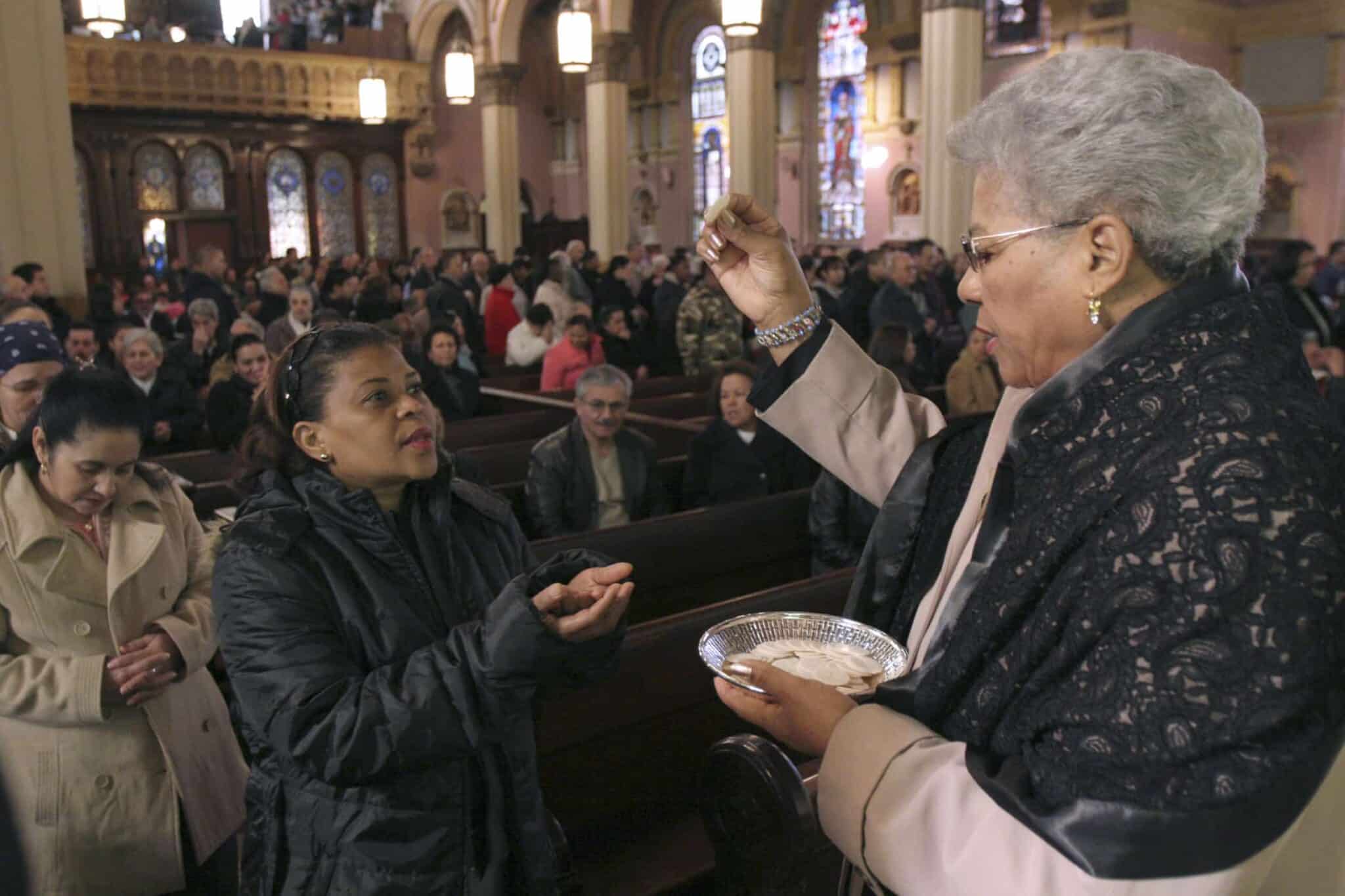When and why did the Catholic Church begin the practice of receiving the host in the hand during Holy Communion?
This ancient custom was revived in the Western Church in the early 1970s. In fact, in the first centuries of Christianity, receiving the body of Jesus in the hand was the norm, not the exception. To my knowledge, no one has ever painted a picture of the Last Supper that shows Jesus placing consecrated bread on the tongues of his disciples.
Receiving the host in one’s hand has been an option in the United States since the bishops authorized this in May 1977 and the Holy See confirmed it.
The oldest reference to the Eucharist in the New Testament occurs in chapters 11 and 12 of the First Letter to the Corinthians, which has no reference to receiving Holy Communion on the tongue. The Eastern Churches have long followed the custom of intinction, using a spoon to dip the consecrated bread into the Precious Blood and then dropping them onto the communicant’s tongue.
In the fourth century, St. Cyril of Jerusalem instructed those preparing for Baptism that, when they received Holy Communion, they should place one hand on top of the other (palms up) in order to make a throne to “receive the King.”
In time, some Christians felt that receiving Holy Communion on the tongue showed greater reverence. By 900 A.D., that practice had become universal in the West. Around the same time, only the ministers at the altar received from the chalice. That, too, was gradually restored as an option in most countries after 1965. Following the Jewish practice of using unleavened bread for Passover (Exodus 12:1-20), Christians in the West eventually used only unleavened bread. Christians in the East continued their practice of using leavened bread.
According to The General Instruction of the Roman Missal, “the consecrated host may be received either on the tongue or in the hand at the discretion of each communicant. When Holy Communion is received under both kinds, the sign of reverence is also made before receiving the Previous Blood” (#160). That sign is usually a simple bow.








2 thoughts on “Receiving the Host in the Hand”
Is the left hand to be on top, cradled by the right hand. Or what is the correct manner?
My right hand on top of my ear as if I’m on the phone